Transforming your patio into a lush, vibrant garden can be both an exciting challenge and a rewarding retreat. Whether you’re just starting your gardening journey or have green thumbs seasoned by years of experience, the possibilities for patio gardens are as diverse as they are delightful. Each patio garden has the potential to be a personal oasis, a reflection of your style, and a testament to your creativity.
Understanding the importance of maximizing small spaces is key to creating a stunning patio garden. With the right inspiration, even the tiniest of patios can become a verdant escape that soothes the mind and delights the senses. Our guide will introduce you to six inspiring patio garden ideas that cater to various tastes and expertise levels, ensuring that every gardener can find something to ignite their passion.
As we explore these inspirations, you’ll discover practical strategies that can easily be adapted to fit your space and lifestyle. From vertical gardens that use every inch of available space to themed gardens that transport you to another world, there’s a wealth of creativity waiting to be unlocked. Dive in and find the inspiration you need to turn your patio into a garden paradise, where tranquility and beauty flourish side by side.
Choosing the Perfect Containers
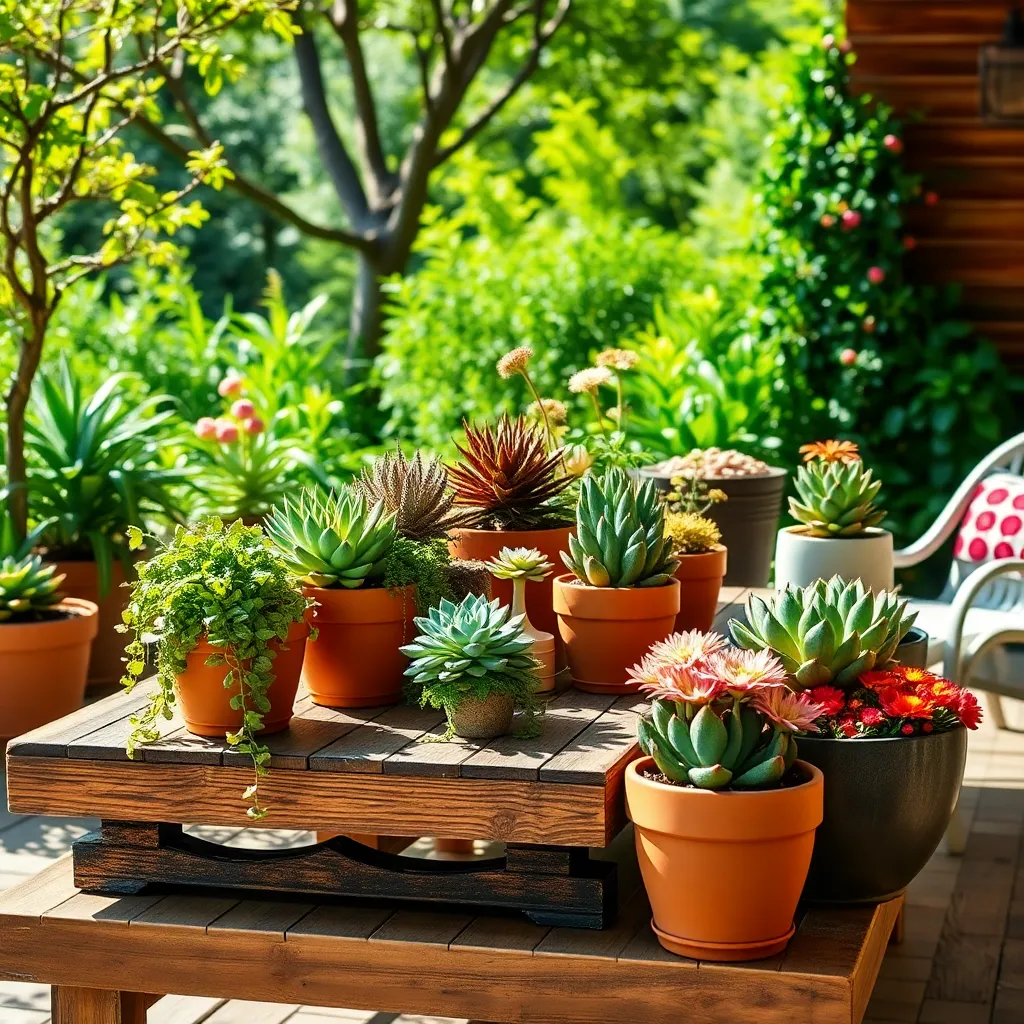
When choosing containers for your patio garden, consider both the aesthetic and functional aspects. Opt for containers that are large enough to allow for root growth, as this will support the health and vigor of your plants.
It’s crucial to select containers with adequate drainage to prevent root rot. If your chosen container doesn’t have drainage holes, you can easily drill some or add a layer of stones at the bottom for improved drainage.
Material choice is also important; terracotta pots offer breathability, while plastic containers retain moisture better. For those living in hot climates, consider using light-colored pots to reflect heat and keep root zones cooler.
Advanced gardeners might experiment with self-watering pots, which can help maintain consistent moisture levels, reducing the frequency of watering. Ensure your soil mix is appropriate for your plant type, such as a cactus mix for succulents or a loamy mix for vegetables.
Incorporating Vertical Planting Ideas

Vertical planting can transform a small patio into a lush, productive garden space. By utilizing vertical space, you can grow more plants without taking up additional ground area, which is perfect for limited patio spaces.
Start by choosing the right structures to support your vertical garden—trellises, wall planters, and hanging baskets are excellent options. Ensure these structures are sturdy and can support the weight of fully grown plants, especially if you plan to grow heavier crops like tomatoes or cucumbers.
When selecting plants, consider those that naturally grow upwards or trail down. Vining plants like peas, beans, and certain varieties of squash thrive in vertical setups, while herbs such as thyme and oregano can cascade beautifully over the edges of hanging baskets.
Soil quality is crucial in vertical planting as containers can dry out quickly. Use a high-quality potting mix with good drainage, and incorporate slow-release fertilizers to provide consistent nutrients over time.
Watering is another critical aspect; vertical plants often need more frequent watering due to increased exposure to wind and sun. Consider installing a drip irrigation system to automate watering and ensure even moisture distribution, which is especially beneficial for busy gardeners.
Creating a Relaxing Seating Space
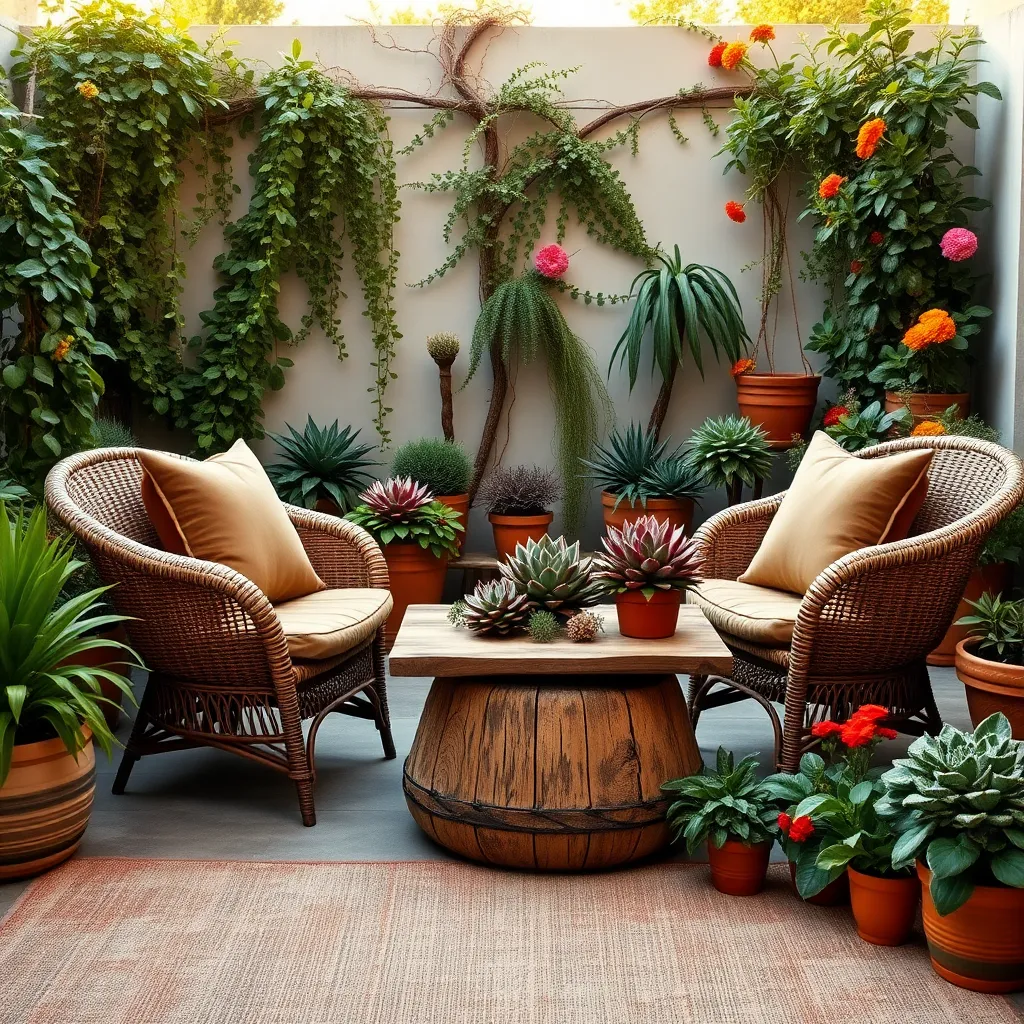
To create a relaxing seating space in your patio garden, start by choosing comfortable outdoor furniture that suits the aesthetic and function of your area. Consider materials like weather-resistant wicker or teak that can withstand various weather conditions while providing durability.
Position your seating area strategically where you can enjoy the best views and sunshine, or opt for a shaded spot if you prefer cooler temperatures. Incorporate movable elements like cushions and throws, which allow you to easily adapt to changing weather conditions and add a personal touch.
Enhance the ambiance with plants that are both visually appealing and functional. Use aromatic plants like lavender or rosemary nearby to deter pests and provide a calming scent—these plants thrive in well-draining soil and require moderate watering.
For an advanced touch, consider integrating a small water feature or wind chimes to enhance the sensory experience. Ensure the water feature is properly maintained by regularly cleaning it and checking its pump to avoid algae growth and ensure smooth operation.
Selecting Vibrant Plant Varieties
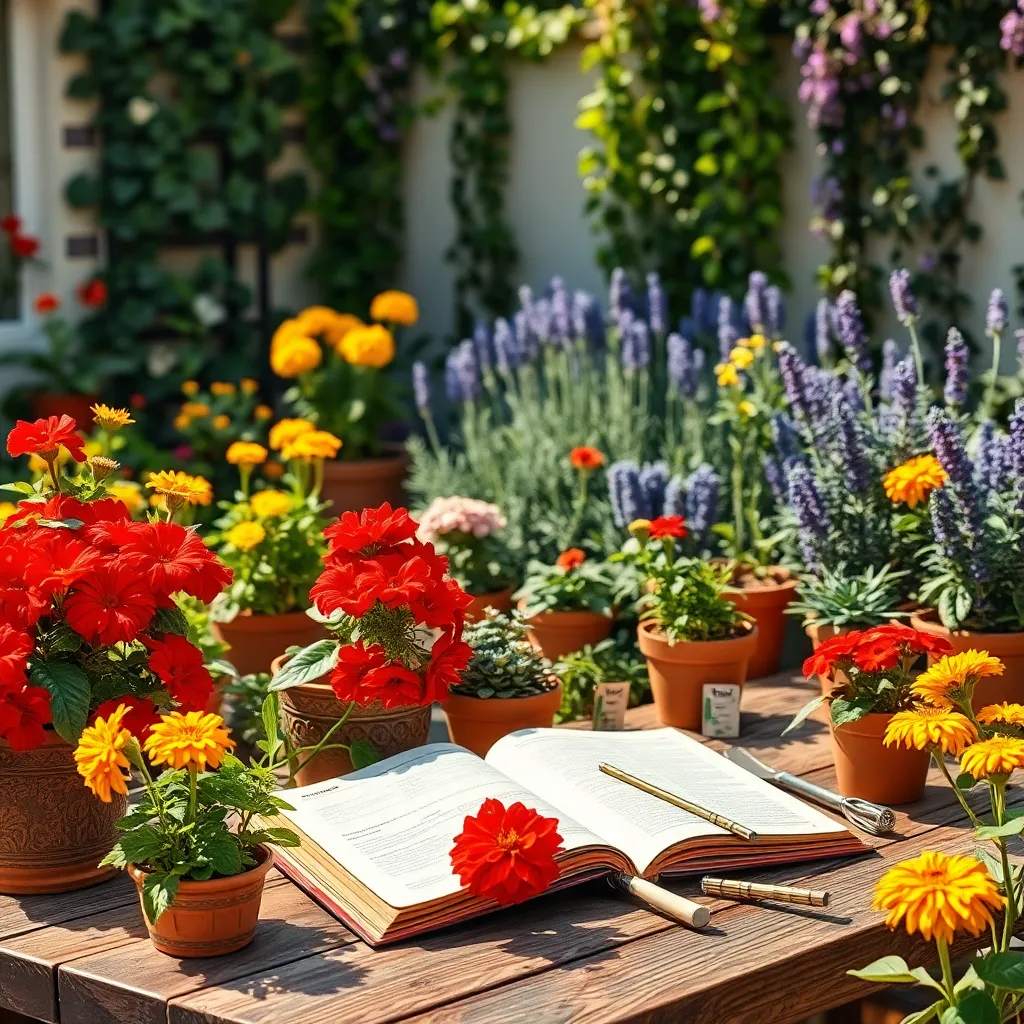
Enhancing your patio garden with vibrant plant varieties can transform it into a colorful oasis. Opt for plants that thrive in your specific climate to ensure lasting vibrancy and health.
Annuals like marigolds and petunias are excellent choices for a burst of color. These flowers are not only easy to grow but also require minimal maintenance, making them perfect for beginners.
Consider adding perennials such as lavender and echinacea, which return year after year. These plants thrive in well-drained soil and need watering about once a week, depending on rainfall.
For a touch of exotic flair, tropical plants like hibiscus can be a stunning addition to your patio. Ensure they receive plenty of sunlight and are kept in a warm environment, especially during cooler months.
Experiment with container gardening to easily swap out plant varieties as seasons change. Use containers with good drainage and fill them with a quality potting mix to support healthy growth.
Integrating Stylish Garden Lighting
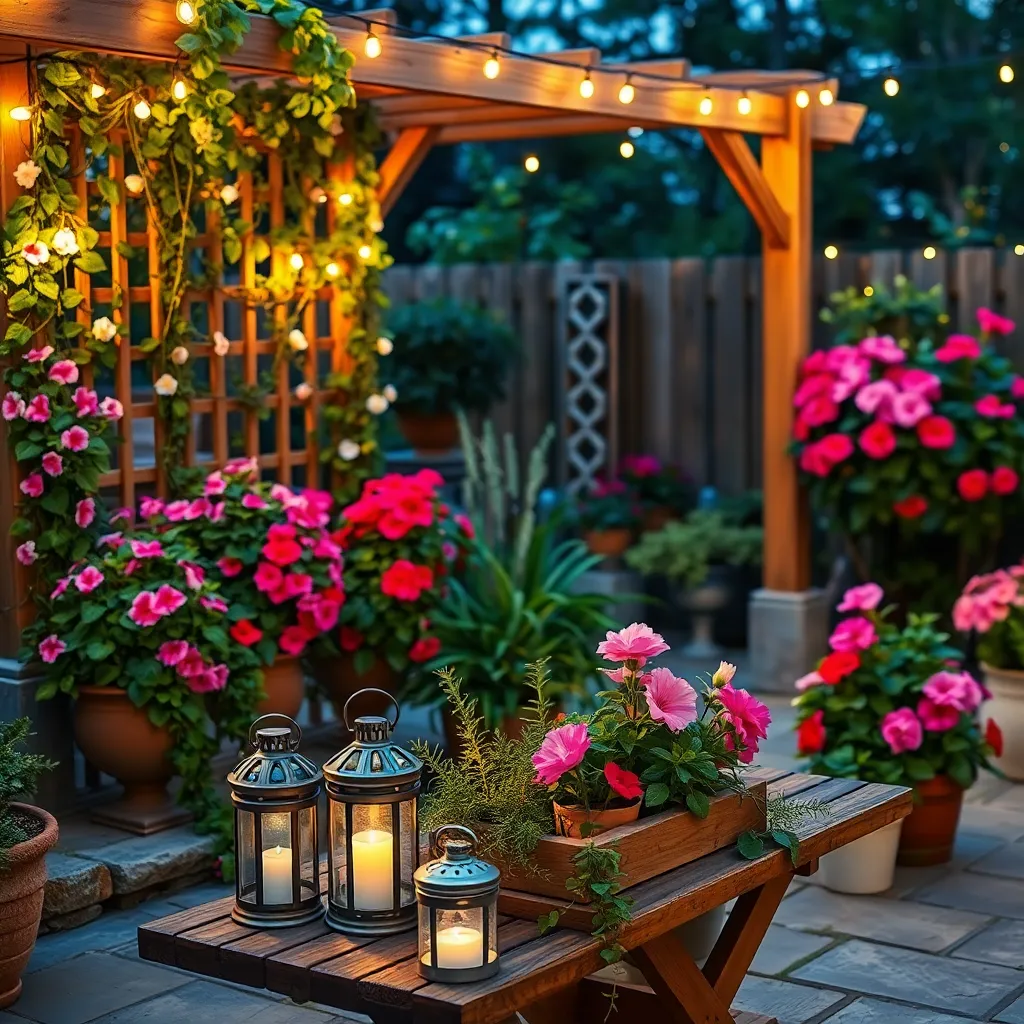
Integrating stylish garden lighting can transform your patio into a magical outdoor space. It’s essential to choose lights that not only enhance the aesthetic but also withstand outdoor conditions.
Consider using solar-powered lights for an energy-efficient and eco-friendly option. These lights are perfect for lining pathways or highlighting specific plants, requiring minimal maintenance.
String lights can add a whimsical touch by draping them across pergolas or weaving them through trees. Choose LED string lights for their long lifespan and low energy consumption, providing a warm ambiance without increasing your electricity bill.
For a more dramatic effect, consider installing uplights to accentuate the textures of trees or garden sculptures. Ensure these lights are strategically placed to avoid harsh shadows, enhancing the garden’s visual depth while keeping pathways safe.
Finally, remember to test your lighting setup before permanently installing it to ensure it meets your desired effect. Experiment with different placements and colors to find the perfect balance that complements your garden’s style and plant varieties.
Sustainable Garden Maintenance Tips
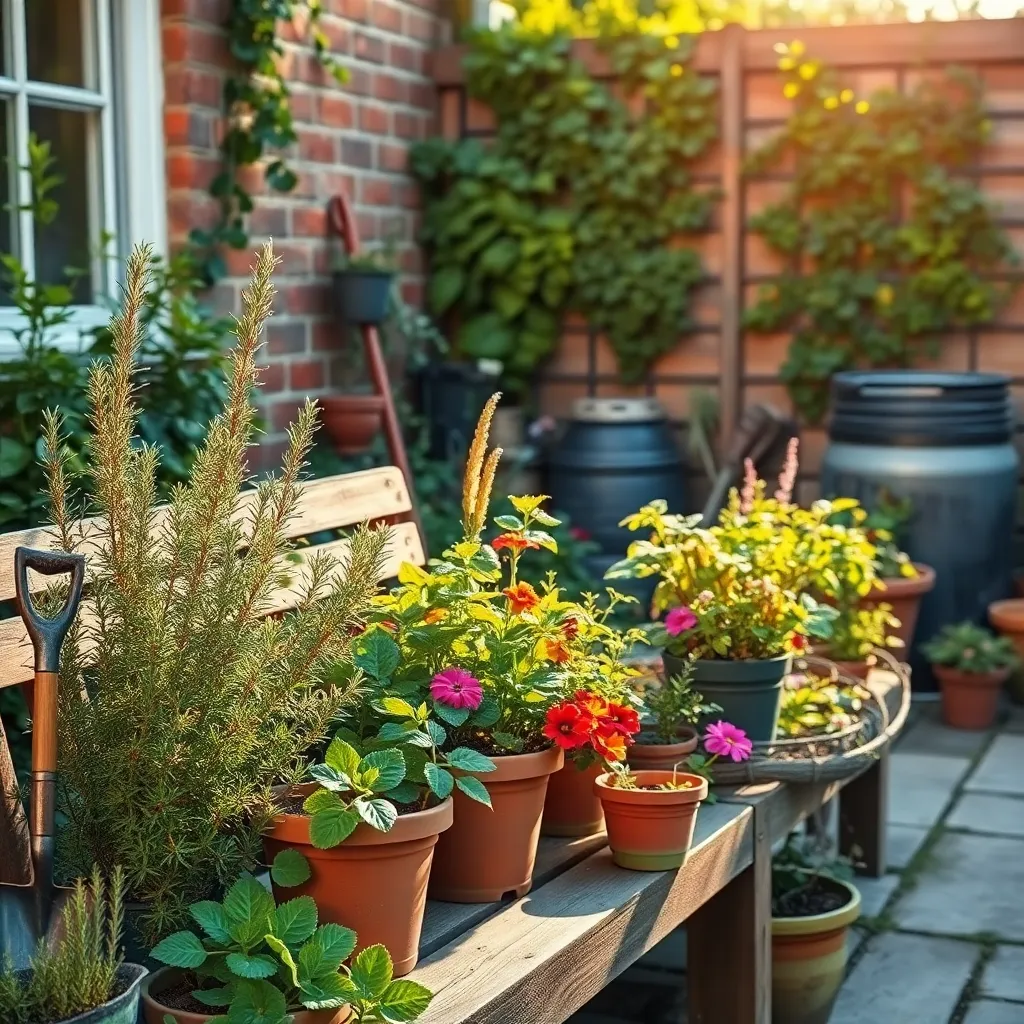
Sustainable garden maintenance is not only environmentally friendly but also cost-effective. One way to achieve this is by using compost as a natural fertilizer, which enriches the soil without chemical additives.
To create your own compost, collect kitchen scraps like vegetable peels and coffee grounds, along with garden waste such as leaves and grass clippings. Layer these materials in a bin or pile, turning them regularly to speed up decomposition and create a nutrient-rich compost.
Water conservation is another crucial aspect of sustainable gardening. Install a rainwater collection system to gather water for your garden, reducing reliance on municipal water sources and lowering your water bill.
In addition to collecting rainwater, consider using mulch around your plants. Mulch helps retain soil moisture, suppresses weeds, and can be made from organic materials like straw or wood chips, further enriching the soil as it breaks down.
For pest management, opt for natural solutions such as introducing beneficial insects like ladybugs and lacewings. These predators help control pest populations without the need for harsh chemicals, making your garden a healthier ecosystem.
Additionally, rotating crops each season can prevent soil nutrient depletion and reduce the likelihood of pest infestations. This technique ensures a more resilient and productive garden over time, preserving soil health for future planting.
Conclusion: Growing Success with These Plants
In exploring the ‘6 Common Patio Garden Inspirations,’ we’ve delved into the enriching parallels between nurturing a garden and cultivating relationships. From the importance of setting a solid foundation with clear communication, akin to preparing fertile soil, to the necessity of regular attention and care, much like the watering of plants, these concepts remind us of the dedication required for relationships to thrive. We’ve also examined the value of embracing change and growth, the beauty of diversity through shared experiences, the strength found in resilience when weathering storms, and the joy of celebrating small victories together.
Now is the perfect time to put this newfound wisdom into practice. Choose one concept to focus on this week, such as enhancing communication or planning a shared activity, and observe how it enriches your relationship dynamics. To ensure you have these insights at your fingertips, save or bookmark this article for easy future reference.
Remember, like a garden, relationships are ever-evolving. By investing time and love, you cultivate a bond that blooms beautifully over the years. Here’s to your journey towards flourishing relationships—plant the seeds of change today and watch them grow into lasting success.







